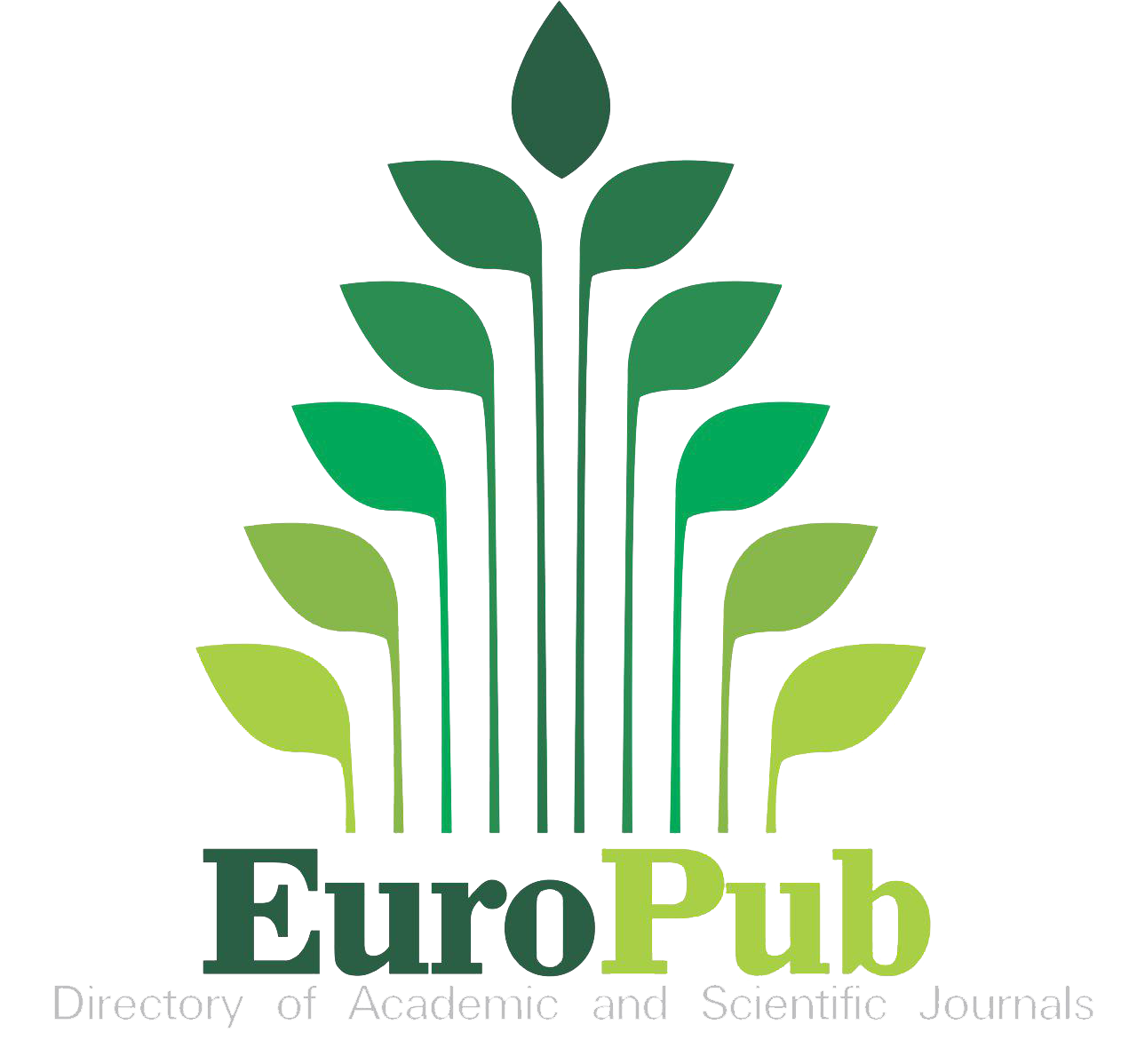Optimization the Nutrient Composition and Anti-nutrient of Cereal-Legume Mixtures for Infant Complementary Feeding: A Review
DOI:
https://doi.org/10.54536/ajfst.v4i1.4210Keywords:
Anti-Nutritional, Cereal-Legume Complementary Feding, Nutrient, OptimizationAbstract
Complementary feeding optimization is the process of improving and adjusting the introduction of solid meals and drinks other than breast milk or formula for infants to infants in addition to nursing. The meal must be nutrient-dense, safe, and suitable for the infant’s age and developmental stage as part of this optimization. Recent research on reducing anti-nutritional ingredients and increasing nutrient content in cereal-legume blends for infant feeding. reviewed. Supplemental diets high in nutrients are essential during this time to support the infant’s growth, cognitive development, and immune system. Long-term health effects may result from malnutrition, which is especially prevalent in children between the ages of 6 and 24 months as a result of poor feeding practices. Cereal-legume blends are known to have a well-balanced nutritional profile that is appropriate for feeding to infants. Protein quality and nutrient bioavailability can be enhanced by combining legumes like beans, chickpeas, or lentils with cereals like rice, wheat, or maize to form complimentary amino acid profiles. In environments with limited resources, these blends offer a sustainable and affordable way to treat infant malnutrition. Optimizing the nutritional composition and reducing anti-nutrients in cereal-legume blends is a key strategy. While cereals provide carbohydrates but lack vital vitamins and minerals, legumes offer fiber, high-quality protein, and essential nutrients. However, they also contain anti-nutritional substances that can hinder nutrient absorption. To maximize their combined benefits, it’s essential to comprehend the nutritional makeup of cereal and legumes separately. Infants can get a lot of energy, protein, and minerals by combining cereals and legumes in complementary foods. In conclusion, optimizing complementary feeding with cereal-legume blends has enormous potential to combat infant malnutrition, especially in environments with limited resources. Researchers want to provide the best possible health and development outcomes for infants during the crucial stage of complementary feeding by improving the nutrient composition, lowering anti-nutrients, and guaranteeing the supply of vital minerals.
Downloads
References
Abeshu, M. A., Lelisa, A., & Geleta, B. (2016). Complementary feeding: review of recommendations, feeding practices, and adequacy of homemade complementary food preparations in developing countries–lessons from Ethiopia. Frontiers in nutrition, 3, 41. https://doi.org/10.3389/fnut.2016.00041
Aderonke Similoluwa Folorunso, S. A. A. and A. K. O. (2019). The Nutritional , Mineral Composition and Growth Response of Blended Infants and Weaning Foods Made From the Combinations of Crayfish , Maize and Millet Grains. Int. J. Food Nutr. Saf, 10(1), 1–10.
Alarcón-Valdez, C., Milán-Carrillo, J., Cárdenas-Valenzuela, O. G., Mora-Escobedo, R., Bello-Pérez, L. A., & Reyes-Moreno, C. (2005). Infant food from quality protein maize and chickpea: Optimization for preparing and nutritional properties. International Journal of Food Sciences and Nutrition, 56(4), 273–285. https://doi.org/10.1080/09637480500146804
Anigo, K. M., Ameh, D. A., Ibrahim, S., & Danbauchi, S. S. (2009). Nutrient composition of commonly used complementary foods in North western Nigeria. African Journal of Biotechnology, 8(17), 4211–4216.
Aranceta, J., & Pérez-Rodrigo, C. (2012). Recommended dietary reference intakes, nutritional goals and dietary guidelines for fat and fatty acids: A systematic review. British Journal of Nutrition, 107(SUPPL. 2). https://doi.org/10.1017/S0007114512001444
Aynalem, E. G., & Duraisamy, R. (2022). Formulation and Optimization of Complementary Food Based on Its Nutritional and Antinutritional Analysis. International Journal of Food Science, 2022. https://doi.org/10.1155/2022/1126031
Banti, M., & Bajo, W. (2020). Review on Nutritional Importance and Anti-nutritional Factors of Legumes. International Journal of Nutrition and Food Sciences, 9(6), 138. https://doi.org/10.11648/j.ijnfs.20200906.11
Barros, F., Awika, J. M., & Rooney, L. W. (2012). Interaction of tannins and other sorghum phenolic compounds with starch and effects on in vitro starch digestibility. Journal of Agricultural and Food Chemistry, 60(46), 11609–11617. https://doi.org/10.1021/jf3034539
Birie, B., Kassa, A., Kebede, E., & Terefe, B. (2021). Minimum acceptable diet practice and its associated factors among children aged 6–23 months in rural communities of Goncha district, north West Ethiopia. BMC Nutrition, 7(1), 1–9. https://doi.org/10.1186/s40795-021-00444-0
El-Gohery, S. S. (2021). Effect of Different Treatments on Nutritional Value of Lima Bean (<i>Phaseolus lunatus</i>) and Its Utilization in Biscuit Manufacture. Food and Nutrition Sciences, 12(04), 372–391. https://doi.org/10.4236/fns.2021.124029
Feyera, M. (2021). Overview of Malting and Fermentation Role in Sorghum Flour, Primarily for Antinutrient Reduction. J Hum Nutr Food Sci, 9(1), 1138.
Forsido, S. F., Duguma, H. T., Lema, T. B., Sturm, B., & Hensel, O. (2019). Nutritional and sensory quality of composite extruded complementary food. Food Science and Nutrition, 7(2), 882–889. https://doi.org/10.1002/fsn3.940
Geremew Yohannes, T., Ouma Makokha, A., Judith Kanensi, O., & Wogayehu Tenagashaw, M. (2020). Developing and nutritional quality evaluation of complementary diets produced from selected cereals and legumes cultivated in gondar province, ethiopia. Current Research in Nutrition and Food Science, 8(1), 291–302. https://doi.org/10.12944/CRNFSJ.8.1.27
Gernar DI, A. P. (2014). Evaluation of Complementary Food Formulated from Local Staples and Fortified with Calcium, Iron and Zinc. Journal of Nutrition & Food Sciences, 04(06). https://doi.org/10.4172/2155-9600.1000326
Gsoellpointner, M., Thanhaeuser, M., Kornsteiner-Krenn, M., Eibensteiner, F., Ristl, R., Jilma, B., Brandstetter, S., Berger, A., & Haiden, N. (2024). Micronutrient Intake during Complementary Feeding in Very Low Birth Weight Infants Comparing Early and Late Introduction of Solid Foods: A Secondary Outcome Analysis. Nutrients, 16(19). https://doi.org/10.3390/nu16193279
Igbua, F. Z., Adejo, S. O., Igoli, N. P., & Daagema, A. A. (2020). Antinutrients and Bioavailability of Nutrients in Maize, Cassava and Soybeans Composite Flour. Asian Food Science Journal, June, 5–12. https://doi.org/10.9734/afsj/2020/v16i230167
Ikujenlola, A. V., Bamidele, O. P., & Alaka, F. T. (2020). Nutritional composition of formulated complementary food produced from blends of malted and unmalted yellow maize ( Zea mays ), soybean ( Glycine max ), and tiger nut ( Cyperus esculentus ) flour . Croatian Journal of Food Science and Technology, 12(2), 249–257. https://doi.org/10.17508/cjfst.2020.12.2.14
Khan, A. (2018). Health complication caused by protein deficiency. Journal of Food Science and Nutrition, 01(01). https://doi.org/10.35841/aajfsn.1000101
Ludi, E., Bosi, L., & Jones, L. (2017). Water for food security Lessons learned from a review of water-related interventions. June, 1–62. www.odi.org/twitter
Makori, N., Kassim, N., Kinabo, J., & Matemu, A. (2017). Nutrient Composition of Cereals-based Complementary Flour and its Nutritional Adequacy in Infants Nutrition. Journal of Food Research, 6(6), 45. https://doi.org/10.5539/jfr.v6n6p45
Mariam, S. (2005). Nutritive Value Of Three Potential Complementary Foods Based On Cereals And Legumes. African Journal of Food, Agriculture, Nutrition and Development, 5(9), 01–14. https://doi.org/10.18697/ajfand.9.1690
Muala, W. C. B., Charnelle, T. K., Fabrice, T. D., Bernard, T., Ghislain, M. N., & Eric Serge, N. (2024). Formulation of weaning food from yellow maize (Zea mays L.) and red millet (Eleusine coracana L.), enriched with pretreated African locust beans (Parkia biglobosa Jacq.) flour. Journal of Agriculture and Food Research, 16(March), 101080. https://doi.org/10.1016/j.jafr.2024.101080
Nayik, G. A., Tufail, T., Muhammad Anjum, F., & Javed Ansari, M. (2023). Cereal Grains: Composition, Nutritional Attributes, and Potential Applications. In Cereal Grains: Composition, Nutritional Attributes, and Potential Applications (Issue February). https://doi.org/10.1201/9781003252023
Oche, I. C., Chudi, P.-A., Terver, S., & Samuel, A. (2017). Proximate Analysis and Formulation of Infant Food from Soybean and Cereals Obtained in Benue State. Nigeria. International Journal of Food Science and Biotechnology, 2(4), 106–113. https://doi.org/10.11648/j.ijfsb.20170204.12
Ogbonna, A. C., Abuajah, C. I., Ide, E. O., & Udofia, U. S. (2012). Effect of malting conditions on the nutritional and anti-nutritional factors of sorghum grist. Annals of the University Dunarea de Jos of Galati, Fascicle VI: Food Technology, 36(2), 64–72.
Okafor, U. I., Omemu, A. M., Obadina, A. O., Bankole, M. O., & Adeyeye, S. A. O. (2018). Nutritional composition and antinutritional properties of maize ogi cofermented with pigeon pea. Food Science and Nutrition, 6(2), 424–439. https://doi.org/10.1002/fsn3.571
Oladiran, D. A., & Emmambux, N. M. (2022). Locally Available African Complementary Foods: Nutritional Limitations and Processing Technologies to Improve Nutritional Quality—A Review. Food Reviews International, 38(5), 1033–1063. https://doi.org/10.1080/87559129.2020.1762640
Olaniyan SA, B. I., & Ademola AA, A. LO. (2015). Malted Sorghum-Soy Composite Flour: Preparation, Chemical and Physico-Chemical Properties. Journal of Food Processing & Technology, 06(08). https://doi.org/10.4172/2157-7110.1000467
Samtiya, M., Aluko, R. E., & Dhewa, T. (2020). Plant food anti-nutritional factors and their reduction strategies: an overview. Food Production, Processing and Nutrition, 2(1), 1–14. https://doi.org/10.1186/s43014-020-0020-5
Sontakke, Pr, K., Hm, S., Em, S., Pu, G., & Md, S. (2019). Technology development for preparation of complementary foods from cereals and legumes and its quality assessment. ~ 426 ~ The Pharma Innovation Journal, 8(3), 426–430. www.thepharmajournal.com
Stan, C. (1991). CAC/GL 8 Page 1 of 10. 1–10.
Tant, E. N., Aliment, Q. U., & Au, C. (2017). Evaluation of Nutrient Composition , Functional and Sensory Attributes of Sorghum , Pigeonpea and Soybean Flour Blends As Complementary Food in. 29(2), 47–58.
Tanyitiku, M. N., & Petcheu, I. C. N. (2022). Formulation and Nutritional Analysis of Processed Sorghum, Soybeans, and Mango Complementary Foods. Journal of Food Research, 11(3), 11. https://doi.org/10.5539/jfr.v11n3p11
Temba, M. C., Njobeh, P. B., Adebo, O. A., Olugbile, A. O., & Kayitesi, E. (2016). The role of compositing cereals with legumes to alleviate protein energy malnutrition in Africa. International Journal of Food Science and Technology, 51(3), 543–554. https://doi.org/10.1111/ijfs.13035
Tesby Mohamed, R. L., Asteer Victor, A. E., Zaki Mahfouz, M., & Khaled Shafik, A. (2019). Preparation and Evaluation of Some Weaning Foods Made from Rice and Legumes. Alexandria Journal of Agricultural Sciences, 64(1), 1–9. https://doi.org/10.21608/alexja.2019.41839
Tesha, A. P., Mwanri, A. W., & Nyaruhucha, C. N. (2022). Nutrient content of complementary foods for children in Kilimanjaro, Tanzania. African Journal of Food Science, 16(11), 279–288. https://doi.org/10.5897/ajfs2022.2170
Tiwari, S., Sangle, A., Gaikwad, P. B., & Aneja, S. (2021). Complementary Feeding : Feeding of an Infant Beyond 6 Months Age. Indian Academics of Pediatrics.
Tura, D. C., Belachew, T., Tamiru, D., & Abate, K. H. (2023). Optimization of a formula to develop iron-dense novel composite complementary flour with a reduced phytate/minerals molar ratio from dabi teff-field pea-based blends using a D-optimal mixture design. Frontiers in Nutrition, 10(October), 1–19. https://doi.org/10.3389/fnut.2023.1244571
Walle, H., & Moges, D. (2017). Optimization of cereal-legume blend ratio to enhance the nutritional quality and functional property of complementary food. Ethiopian Journal of Science and Technology, 10(2), 109. https://doi.org/10.4314/ejst.v10i2.3
Downloads
Published
How to Cite
Issue
Section
License
Copyright (c) 2025 Ziad Ahmed

This work is licensed under a Creative Commons Attribution 4.0 International License.







